
This learning path prepares you for the task of migrating SQL Server workloads to Azure SQL.
You'll learn how to assess SQL Server components and compatibility for migration using the Azure SQL Migration Extension and Database Migration Assistant. You'll also learn how to provision and configure Azure SQL resources. You'll gain hands-on experience in choosing the best migration option to meet business requirements for downtime, handling migration state, and monitoring database migration.
Additionally, you'll also learn to perform post-migration tasks like disaster recovery and monitoring. These skills are essential for ensuring a smooth, efficient transition to Azure SQL, and maintaining its operation post-migration.
Prerequisites
- Experience with SQL Server databases.
- Knowledge of SQL Server editions and versions.
- Basic knowledge of security concepts like identities and permissions.
- Experience using the Azure portal to create resources and set permissions.

This course provides students with the knowledge and skills to administer a SQL Server database infrastructure for cloud, on-premises and hybrid relational databases and who work with the Microsoft PaaS relational database offerings. Additionally, it will be of use to individuals who develop applications that deliver content from SQL-based relational databases.
The audience for this course is data professionals managing data and
databases who want to learn about administering the data platform
technologies that are available on Microsoft Azure. This course is also
valuable for data architects and application developers who need to
understand what technologies are available for the data platform with
Azure and how to work with those technologies through applications.
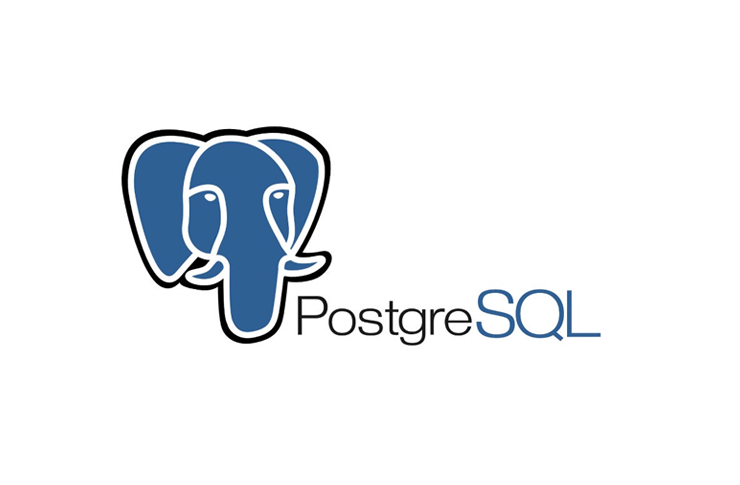
● Plus d'informations en consultant ce cours (auto-inscription)
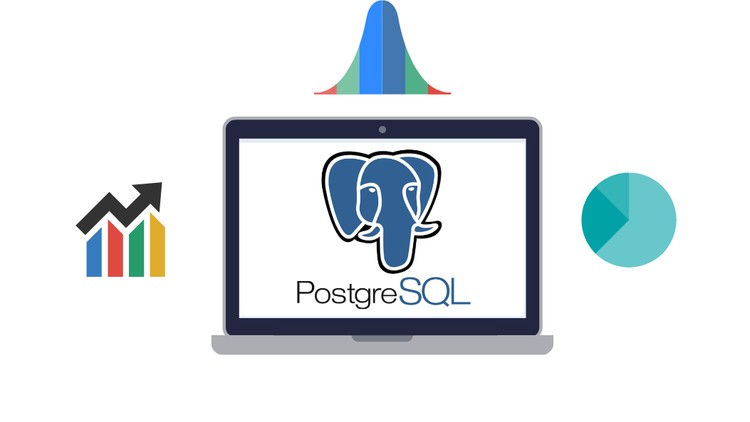
SMALS STANDARDS Learn how to use SQL quickly and effectively with this course. You'll learn how to read and write complex queries to a database using one of the most in demand skills - PostgreSQL. These skills are also applicable to any other major SQL database, such as MySQL, Microsoft SQL Server, Amazon Redshift, Oracle, and much more.
In this course you will learn :
- Use SQL to query a database
- Use SQL to perform data analysis
- Be comfortable putting SQL and PostgreSQL on their resume
- Learn to perform GROUP BY statements
- Replicate real-world situations and query reports
- Enseignant: Mieke Vandenbulcke
- Enseignant: Mieke Vandenbulcke
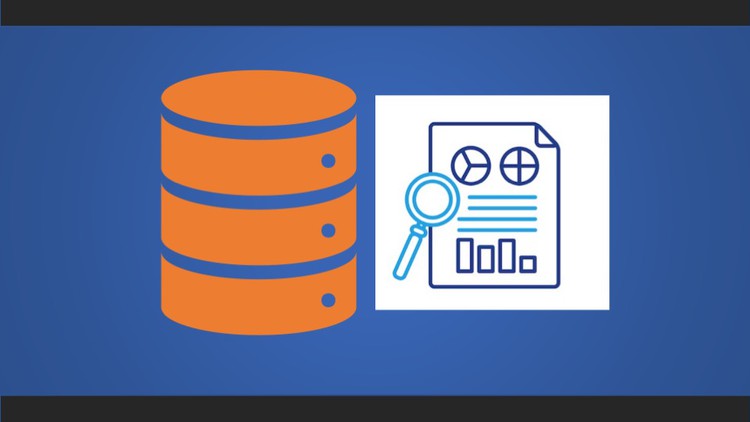
-
Learn with 60+ hours of hands-on practical exercises
-
Step-by-step walkthrough to perform simple to complex SQL queries
-
Subqueries, CTEs, Indexes, PL/SQL, PL/pgSQL, Triggers, Cursors, Partitions, Views, JSON, Window Functions, and much more
-
How to create a database from scratch
-
Creating and using various Data types
-
Creating User-defined data types
-
Table and Column constraints
-
Understanding, Using, and creating custom Sequences
-
String Functions
-
Aggregate Functions
-
Date/Time Functions with query analysis
-
Grouping data with group sets
-
Schemas creations and privileges
-
Table Partitioning techniques
-
Exploring Array Functions
-
In-depth JSON data types and queries
-
Subqueries
-
Common Table Expressions (CTEs)
-
Recursive Common Table Expressions
-
Advanced Window Functions
-
Server Programming
-
Functions with SQL Language
-
Functions with PL/pgSQL Language
-
Exploring Stored Procedures
-
Indexes and queries performance optimizations
-
Multiple Data Views types and Security
-
Using Regular Expressions for Text Patterns
-
Power Text Searches with special data types and indexes
-
Crosstab Reports with crosstab extensions
-
Making our database for global languages - Internationalization
-
psql Utility Commands
-
Understanding PostgreSQL Internals
-
Triggers
-
Using Cursors
-
Data integrity with Transactions and Savepoints
-
Managing PostgreSQL security
-
Extended PostgreSQL echosystem
-
Analyze sample HR, Stocks, Northwind, Global Trades databases
-
Practice with huge number of queries
-
Use SQL to perform data analysis
-
Confident putting SQL and PostgreSQL on your resume
Demande de formation
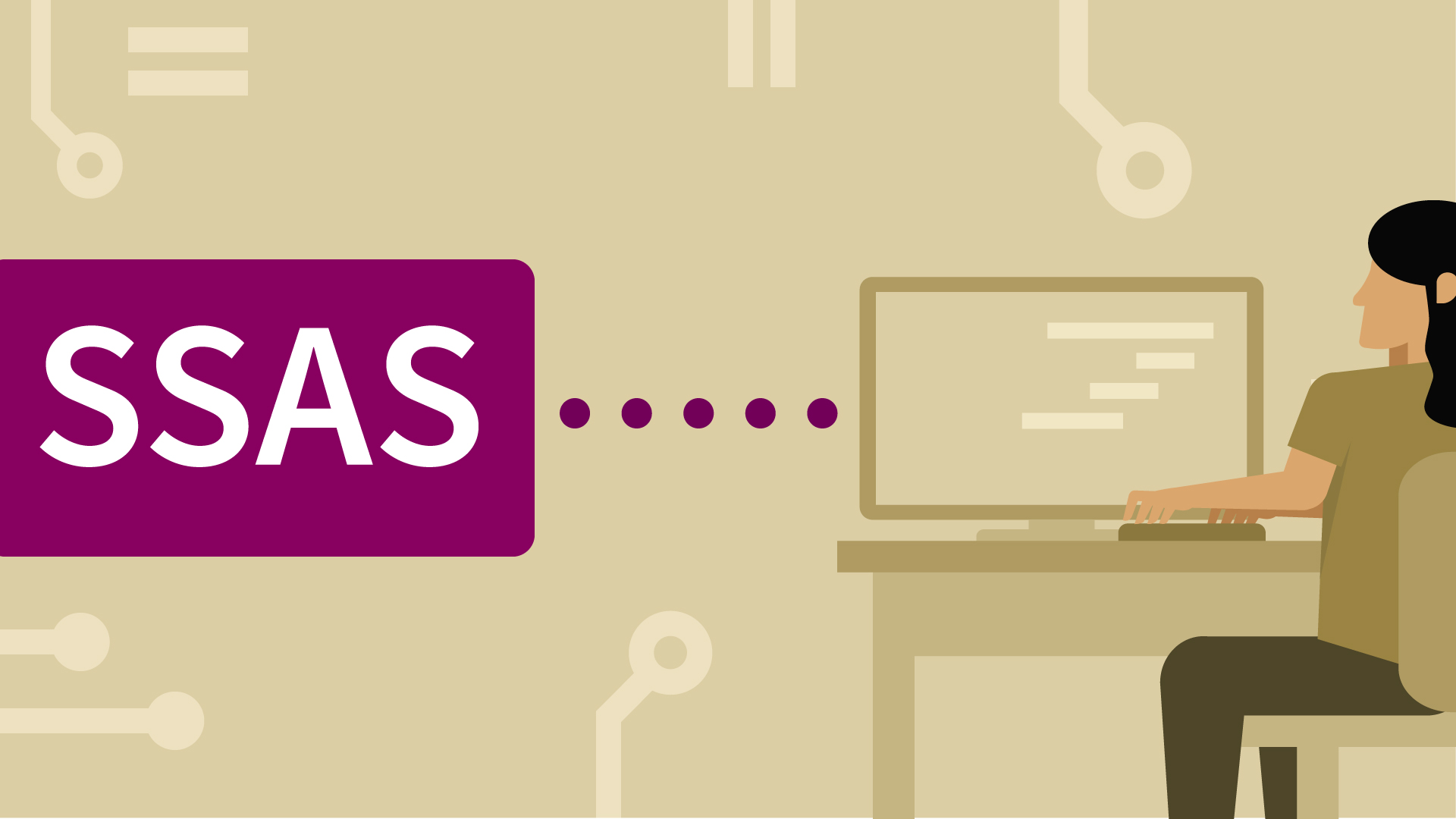
Dans cette formation destinée aux développeurs et ingénieurs utilisant SQL Server 2017, vous aborderez les bases de données décisionnelles. Créées et gérées avec SSAS (SQL Server Analysis Services), elles répondront à vos besoins, aussi bien en mode multidimensionnel que tabulaire. Après l'installation et la prise en main, vous passerez à la réalisation de projets et à l'analyse de données selon le mode choisi. Au terme de cette formation, vous aurez toutes les clés en main pour mettre en œuvre et tirer parti des capacités d'analyse des bases de données décisionnelles.
Topics include:
Ce cours n´est disponible qu´en anglais. Si ce n´est pas un problème pour vous, soumettez votre demande.
This course is in French only. If this is not a problem for you, by all means go ahead and apply.
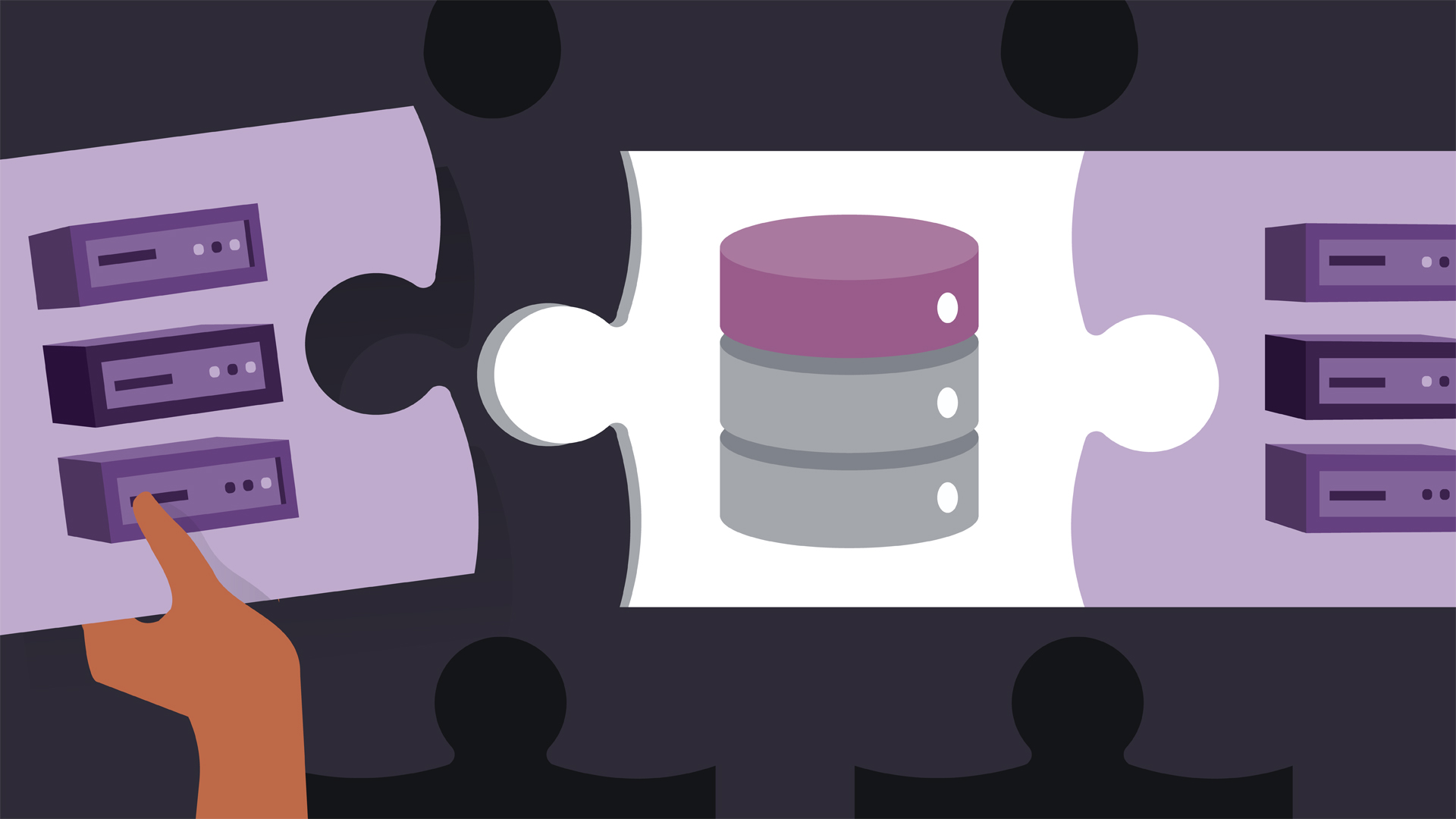
SQL Server Integration Services (SSIS) is one of the core add-on components to SQL Server. With SSIS, professionals can create automated workflows that streamline the process of consolidating data from a wide variety of sources. Through a process called ETL—extract, transform, and load—you can ingest and move data between systems such as other databases, flat data files, and even online repositories. In this course, Adam Wilbert helps you get up and running with SSIS. Adam shows how to work with different control flow tasks, data sources, connections, and transformations. Plus, see how to add variables to control package execution, run packages with T-SQL, and more.
Topics include:
- Managing and administering SQL with SSIS tasks
- Making packages dynamic with variables and parameters
- Creating a sequence container
- Extracting data from a source
- Handling errors
- Running packages with T-SQL
- Scheduling packages with SQL Server Agent
Ce cours n´est disponible qu´en anglais. Si ce n´est pas un problème pour vous, soumettez votre demande.
This course is in French only. If this is not a problem for you, by all means go ahead and apply.

Discover how to build, edit, and publish interactive reports using Reporting Services in SQL Server. In this course, author Adam Wilbert shows how to create, format, and share reports that leverage a variety of data sources. First, he takes you through the setup process, followed by the step-by-step process of building a report. He covers interactive elements, formatting, charts, sorting, filtering, web viewing, and mobile viewing. Adam also shares best practices, tips, and tricks that you can use to ensure your reports are dynamic.
Topics include:
- What is SQL Server Reporting Services (SSRS)?
- Installing and setting up SSRS
- Configuring a report server
- Joining data tables
- Filtering and sorting data
- Grouping data in a report
- Working with matrixes
- Using aggregate functions
- Working with parameters
- Displaying charts and sparklines
- Creating device-specific layouts
- Viewing reports in the Power BI mobile app
- Reusing report parts
Ce cours n´est disponible qu´en anglais. Si ce n´est pas un problème pour vous, soumettez votre demande.
This course is in French only. If this is not a problem for you, by all means go ahead and apply.

Dimensional models like data warehouses can provide a more accessible and consistent form of data storage than relational databases. You can consolidate data from multiple sources into a single repository for business intelligence, analysis, and reporting. This course explains how to create a long-term data storage solution using local SQL Server instances and Azure SQL Data Warehouse. Instructor Adam Wilbert shows how to build a data warehouse from the ground up, starting with the tables and views; establish control flow; enforce data quality; and use your data in services such as SQL Server Reporting Services and Power BI. By the end of the course, you will be able to implement a robust, custom solution to serve all your organization’s business intelligence, reporting, and analysis needs.
Topics include:
- Transactional databases vs. data warehouses
- Star and snowflake schemas
- Creating a data warehouse
- Designing tables and views
- Rebuilding columnstore indexes
- Creating an Azure SQL Data Warehouse
- Establishing control flow beyond ETL
- Enforcing data quality
- Configuring Master Data Services
- Consuming data from the warehouse in BI services
Ce cours n´est disponible qu´en anglais. Si ce n´est pas un problème pour vous, soumettez votre demande.
This course is in French only. If this is not a problem for you, by all means go ahead and apply.

Many data scientists know how to work with SQL—the industry-standard language for data analysis. But as data sizes grow, you need to know how to do more than simply read and write from a database. This course provides a more sophisticated approach to designing data models and optimizing queries in SQL. Instructor Dan Sullivan begins with the logical and physical design of tables—with particular focus on very large databases—and then presents a deep dive review of indexes, including specialized indexes and when to use them. The next section introduces query optimization and shows how to optimize basic, multi-join, and more complex queries. The course also covers SQL extensions, including user-defined functions and specialized data types. The techniques taught here enable more efficient analysis of large data sets using SQL, statistics, and custom business logic.
Topics include:
Ce cours n´est disponible qu´en anglais. Si ce n´est pas un problème pour vous, soumettez votre demande.
This course is in French only. If this is not a problem for you, by all means go ahead and apply.

SQL queries can be fast and highly efficient, but they can also be slow and demand excessive CPU and memory resources. For many SQL programmers, occasional bouts with long-running queries and poor performance are simply par for the course. But by gaining a better understanding of how databases translate SQL queries into execution plans, you can take steps to avoid these issues. In this course, Dan Sullivan shows you how to analyze query execution plans and use data modeling strategies to boost query performance. Dan describes how SQL queries are executed, highlights different types of indexes and how they factor in query tuning, covers several methods for performing joins, and discusses how to use partitioning and materialized views to improve performance. Plus, Dan shows you how to run PostgreSQL in GitHub Codespaces so you can get started learning faster.
Topics include:
Ce cours n´est disponible qu´en anglais. Si ce n´est pas un problème pour vous, soumettez votre demande.
This course is in French only. If this is not a problem for you, by all means go ahead and apply.

Never worked with a database before? In this course, Adam Wilbert goes over the most important features of working with SQL Server 2019, providing brand-new users with a first look at how the server operates. Instructor Adam Wilbert introduces the main working environment, SQL Server Management Studio, and walks you through how to create tables, define relationships, and write and run queries with Transact-SQL commands. Upon wrapping up this course, you’ll know everything you need to accomplish to create your first database. Start watching to quickly get up and running with this professional-grade database management system.
Topics include:
- What is SQL Server?
- Configuring the server
- Creating a new database and data tables
- Joining tables with keys
- Creating a SELECT statement
- Writing an UPDATE statement
- Adding data with the INSERT statement
Ce cours n´est disponible qu´en anglais. Si ce n´est pas un problème pour vous, soumettez votre demande.
This course is in French only. If this is not a problem for you, by all means go ahead and apply.

Master the fundamentals of SQL Server 2019, the industry-leading database management platform from Microsoft. In this course, instructor Adam Wilbert equips beginners with the core skills they need to create and manage SQL Server databases. Adam begins with the basics, showing how to install SQL Server and log into a local database server. He then discusses how to create new databases, design tables, define relationships, write queries, and use stored procedures and built-in functions. Plus, he demonstrates how to perform crucial database administration tasks, such as backups and restores, security enhancements, and performance monitoring.
Topics include:
- Installing Management Studio
- Enabling features with SQL Server Configuration Monitor
- Creating a database
- Creating tables with Transact-SQL (T-SQL)
- Creating relationships between tables
- Creating views
- Creating user-defined scalar functions
- Backing up and restoring SQL Server
- Monitoring and management
- Security
Ce cours n´est disponible qu´en anglais. Si ce n´est pas un problème pour vous, soumettez votre demande.
This course is in French only. If this is not a problem for you, by all means go ahead and apply.
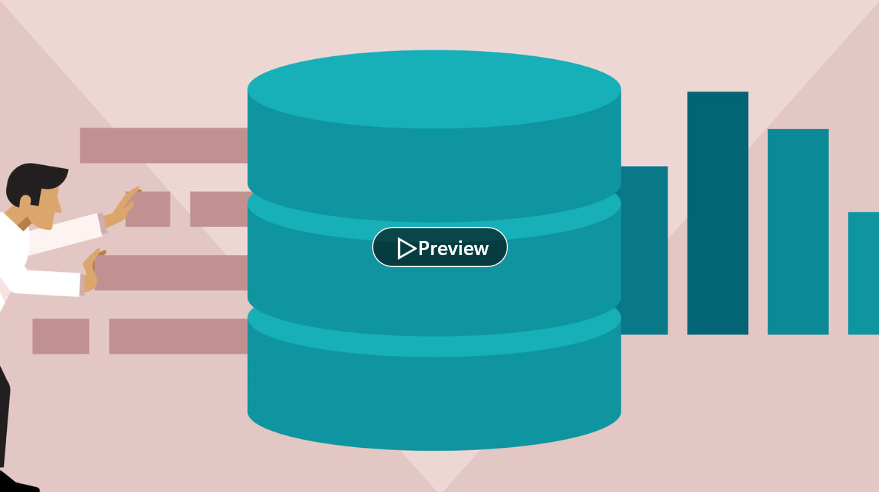
Mastering the SQL language is an essential skill for any Oracle professional and is the first step in becoming a true Oracle expert. As with any database platform, Oracle has its own take on the SQL language that builds on top of industry standards. In this course, Oracle instructor and consultant David Yahalom covers the basics required to code with SQL in an Oracle Database 12c environment. Learn how to select and filter data, and manipulate data using functions, including SUBSTR, UPPER, MIN, MAX, AVG, SUM, and more. Then find out how to combine data from two or more tables in a single statement with joins. Discover how to modify data with DML and DDL commands like DELETE and UPDATE, and group data with aggregate functions. David also provides an overview of advanced concepts, such as constraints and subqueries. Note: This training course is appropriate for beginning database developers with no prior experience with SQL or Oracle.
Topics include:
- Using Oracle SQL*Developer, the free development environment
- Selecting data from tables
- Filtering data
- Using functions to manipulate data
- Joining data from tables
- Creating tables
- Updating values
- Truncating data
- Grouping and ordering result sets
- Working with primary keys
- Checking constraints
Ce cours n´est disponible qu´en anglais. Si ce n´est pas un problème pour vous, soumettez votre demande.
This course is in French only. If this is not a problem for you, by all means go ahead and apply.

Mastering SQL is an essential skill for any Oracle professional and the first step in becoming a true Oracle expert. In this course, Bob Bryla covers the basics required to code using SQL in an Oracle 19c Database environment. Bob covers what you need to know to get data in and out of your database tables, as well as how to modify data. He explains how to leverage SELECT statements, filter and sort rows, use both single- and multiple-row functions, and join tables. He delves into the Oracle data dictionary—a set of tables that provide information about a database—and shows how to query it. Plus, he demonstrates how to efficiently delete data using DML statements. Upon wrapping up this course, you'll have the fundamental skills you need to work with SQL in this popular relational database management system.
Topics include:
Ce cours n´est disponible qu´en anglais. Si ce n´est pas un problème pour vous, soumettez votre demande.
This course is in French only. If this is not a problem for you, by all means go ahead and apply.

Discover how to query data from SQL Server tables. In this course, Adam Wilbert covers how to retrieve information stored in a Microsoft SQL Server database using the Transact-SQL (T-SQL) language. Learn the fundamental structure of a query and see how to manipulate data through the use of built-in functions, operators, filters, and other language features to return a dataset that's formatted to meet a wide variety of needs and perspectives. Upon wrapping up this course, you'll be equipped with the commands and keywords you need to know to effectively analyze your data.
Topics include:
- Writing SELECT queries
- Removing duplicates with DISTINCT
- Matching text with LIKE and wildcards
- Retrieving records from multiple tables
- Grouping records
- Using functions in T-SQL
- Writing SQL scripts
- Using subqueries
- Creating and using variables in a query
Ce cours n´est disponible qu´en anglais. Si ce n´est pas un problème pour vous, soumettez votre demande.
This course is in French only. If this is not a problem for you, by all means go ahead and apply.
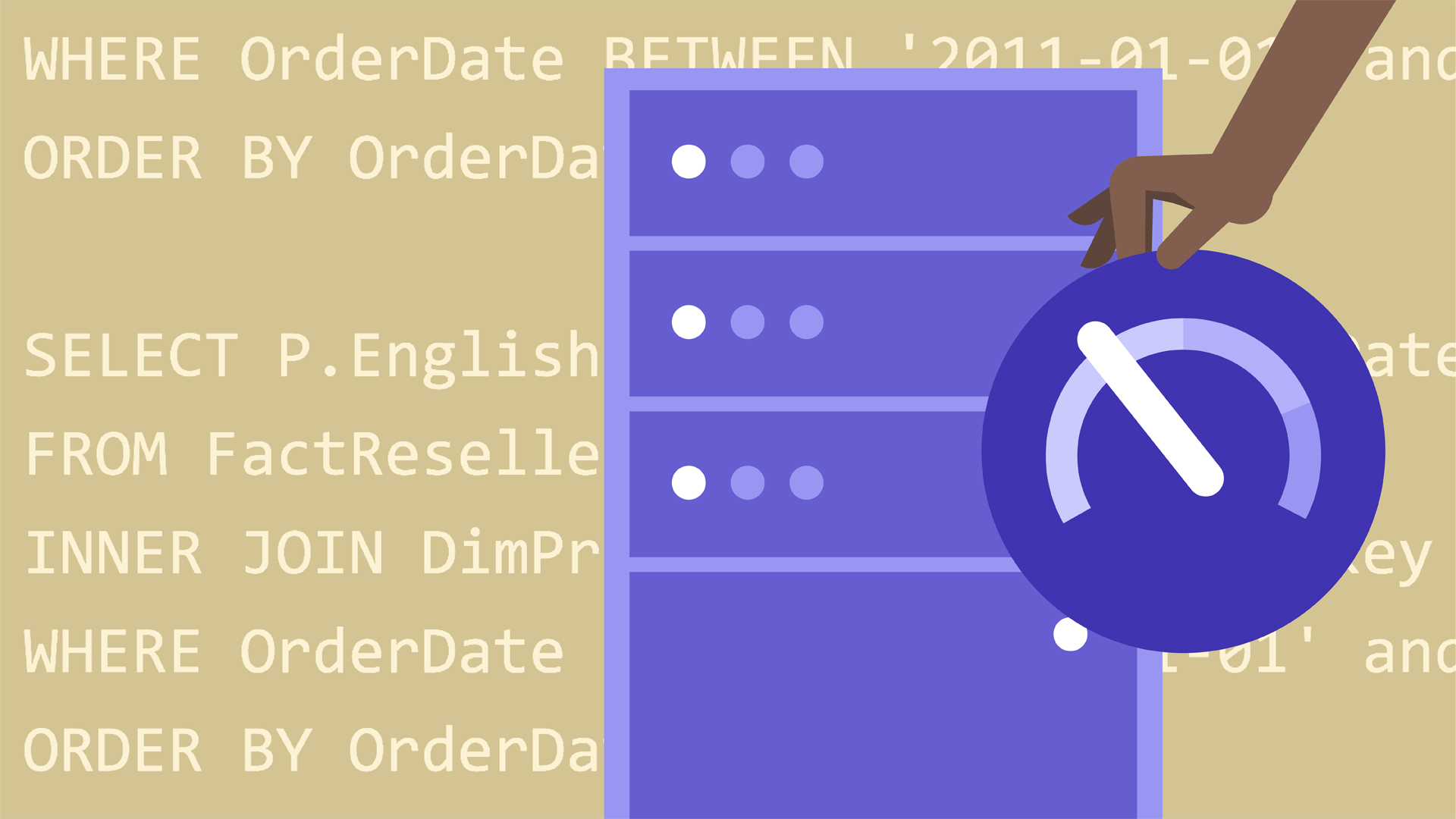
Developers face an array of challenges when trying to develop performant applications for Microsoft SQL Server. In this course, instructor Joey D'Antoni shares concepts and strategies that can help you enhance your app's performance on SQL Server. Throughout this course, Joey walks through best practices for building efficient, scalable database applications. He covers an array of topics, including execution plans, columnstore indexes, datatypes, temporary objects, and what not to do with SQL Server. He also goes over indexing, and shares how best to create temporary objects.
Topics include:
- Query execution
- How to read an execution plan
- What not to do with SQL Server
- Why cursors are bad
- Why scalar UDFs are expensive
- Datatypes and design
- Indexing
- What is a columnstore index?
- Transaction isolation
Ce cours n´est disponible qu´en anglais. Si ce n´est pas un problème pour vous, soumettez votre demande.
This course is in French only. If this is not a problem for you, by all means go ahead and apply.

● Create basic SQL Queries
● Create Left, Right, Inner and Full Outer joins
● Normalize Databases
● Understand first, second and third normal form schemas
● Create advanced SQL Queries
● Create new tables, alter existing tables in Databases
● Understand database design
Target audience: Anybody who wants to enhance their Data Science career. Anybody who wants to learn PostgreSQL. Anybody who wants to better understand how databases work. This course is not suitable for developers.
Demande de formation

Get Ben Sullins's 12 must-have SQL techniques for data science pros—engineers, DevOps, data miners, programmers, and other systems specialists. Ben's tips focus on practical applications of SQL queries for data analysis. Learn how to retrieve data, join tables, calculate rolling averages and rankings, work with dates and times, use window functions, aggregate and filter data, and much more. Each tip is short, relevant, and up to date with current industry best practices—making this the perfect course for busy analysts who normally struggle to find time to build their skills.
Topics include:
Ce cours n´est disponible qu´en anglais. Si ce n´est pas un problème pour vous, soumettez votre demande.
This course is in French only. If this is not a problem for you, by all means go ahead and apply.
